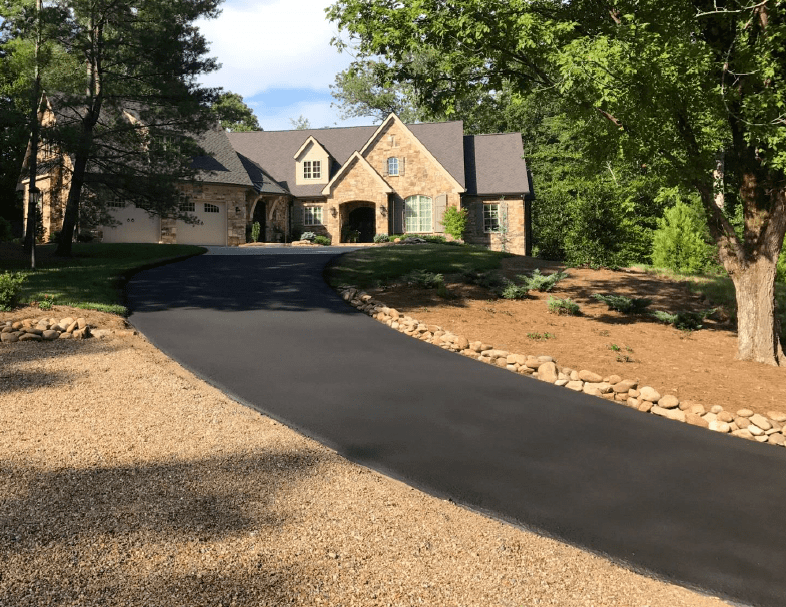The Role of Asphalt in Noise Reduction on Roads

As urban areas continue to grow and road networks expand, the challenge of traffic noise has become an increasing concern for city planners, engineers, and residents alike.
From the roar of engines to the constant hum of tyres on pavement, road noise contributes significantly to environmental noise pollution. One of the most effective and cost-efficient solutions to help mitigate this issue lies in the very surface we drive on—asphalt.
Asphalt, a composite material commonly used in road construction, not only provides a smooth and durable surface but also plays a crucial role in reducing noise levels. In this article, we explore how asphalt contributes to noise reduction on roads, the science behind it, and the various types of asphalt technologies being used across Australia and beyond.
Understanding Road Noise
Before diving into how asphalt reduces noise, it’s important to understand what causes road noise in the first place. Road traffic noise primarily stems from three sources:
- Tyre-Pavement Interaction – As vehicles move, tyres generate sound when they come into contact with the road surface. This is the dominant source of noise at speeds above 40–50 km/h.
- Mechanical Noise – Engine sounds, exhaust systems, and vehicle vibrations contribute significantly at lower speeds or in heavy vehicles.
- Aerodynamic Noise – At very high speeds, airflow around the vehicle and its components generates noise, although this is more common on highways and motorways.
Of these, the interaction between tyres and pavement accounts for the majority of road noise in urban and suburban areas. That’s where asphalt steps in as an effective sound-reducing material.
How Asphalt Helps Reduce Road Noise
Asphalt’s ability to reduce noise lies in both its material composition and surface texture. Here’s how:
1. Porous Structure
Certain types of asphalt, such as porous asphalt or open-graded asphalt, are engineered to allow air and water to pass through the surface. This porosity helps to absorb some of the sound energy produced by tyre contact. It also reduces the air compression between the tyre and the road surface, which is a significant source of noise.
In Australia, porous asphalt is often used in urban environments, bitumen driveways brisbane, and residential areas to reduce the noise impact of busy roads.
2. Smooth Surface Texture
Traditional concrete surfaces tend to be rough and create more vibration and sound when driven over. In contrast, asphalt driveways and roads provide a smoother, more flexible surface, which reduces tyre noise. Smooth textures reduce the frictional interaction between tyres and the road, leading to quieter journeys.
3. Vibration Dampening
Asphalt has inherent flexibility and elasticity, which helps in dampening vibrations caused by vehicle movement. This not only contributes to a quieter ride but also improves driving comfort and reduces wear and tear on vehicles.
Types of Noise-Reducing Asphal
There are several types of asphalt mixes and techniques that have been developed specifically for the purpose of noise reduction:
Open-Graded Asphalt (OGA)
This mix contains fewer fine particles, resulting in more voids or open spaces in the material. These voids help absorb sound waves and reduce surface spray during rain, improving both noise and safety.
OGAs are often used on highways in Queensland and New South Wales to reduce traffic noise near residential zones.
Stone Mastic Asphalt (SMA)
While not as porous as OGA, SMA has a durable surface and offers good noise reduction due to its ability to create a smooth ride. It’s increasingly used on high-volume roads and motorways throughout Australia.
Rubber Modified Asphalt
By incorporating recycled rubber (usually from old tyres), this innovative mix not only improves sustainability but also enhances noise-reducing properties due to the rubber’s natural sound-absorbing qualities. It’s gaining popularity in Victoria and South Australia as a green alternative.
Benefits of Using Asphalt for Noise Reduction
The use of noise-reducing asphalt offers a variety of benefits for local communities and road users alike:
- Improved Quality of Life: Reducing road noise near residential areas contributes to better sleep, reduced stress levels, and overall health improvements for residents.
- Increased Property Values: Quieter neighbourhoods are more desirable, potentially leading to increased property values.
- Enhanced Road Safety: Porous asphalt not only reduces noise but also improves drainage and reduces surface water spray, enhancing visibility and reducing hydroplaning risks.
- Environmental Benefits: Asphalt can be recycled and modified with sustainable materials like rubber, contributing to a circular economy and reduced environmental impact.
Case Studies in Australia
Brisbane’s Legacy Way Tunnel
The Legacy Way Tunnel uses porous asphalt throughout its interior to minimise noise for drivers and reduce echo effects. This approach significantly improved driver comfort and reduced the acoustic load on the tunnel’s ventilation system.
Melbourne’s M80 Ring Road Upgrade
During the M80 Ring Road upgrade, noise-reducing asphalt was laid in residential sections and driveways of the project. Post-upgrade studies reported a reduction in average noise levels by up to 4 decibels—a noticeable improvement for nearby homes.
Challenges and Considerations
Despite its advantages, noise-reducing asphalt is not without challenges:
- Maintenance Needs: Porous asphalts may clog over time, reducing their noise-reducing effectiveness. Regular maintenance is essential.
- Cost Factors: Some low-noise asphalt types, such as rubber-modified variants, may be more expensive initially, though they often offer long-term savings in maintenance and community benefits.
- Climate Suitability: In areas with extreme temperatures, certain asphalt types may degrade faster or require modification to ensure longevity.
The Future of Quiet Roads
With growing attention to liveability and environmental health in urban planning, the demand for quieter roads is likely to increase. Advancements in asphalt technology continue to emerge, focusing on improving both performance and acoustic benefits.
Incorporating smart materials, self-healing properties, and even energy-harvesting surfaces, the asphalt of the future may not only reduce noise but also contribute to energy efficiency and infrastructure longevity.
Conclusion
Asphalt plays an increasingly vital role in reducing road noise and improving urban liveability. By selecting the right type of asphalt surface and maintaining it properly, councils and governments can significantly reduce the impact of traffic noise on surrounding communities. In a world where sustainability, health, and comfort are becoming top priorities, asphalt stands as a practical, proven solution for building quieter roads.






